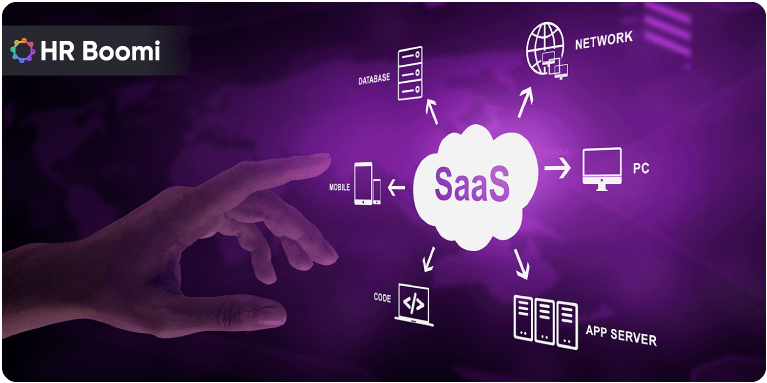
Table of Contents
Cloud-based SaaS products have grown fundamental to worldwide groups in the ever-evolving virtual landscape. By 2025, 85% of small businesses are expected to include these answers, highlighting their significant potential. However, putting the proper charge for a SaaS product calls for a blend of intuition and analysis, delicately balancing perceived user price, marketplace demand, and operational costs. The actual venture lies in pinpointing an aggressive pricing strategy and crafting a graph that fosters enduring patron relationships while maximizing sales.
This complete guide delves into the complexities of SaaS product pricing, imparting expert insights and in-intensity analyses to navigate the difficult procedure of determining the perfect fee.
Why Does SaaS Product Pricing Matters?
In the realm of SaaS products, pricing doesn’t just indicate monetary value but signifies foundational business philosophies and profoundly impacts fiscal growth paths. It isn’t just a figure but a declaration, signaling product value to potential clients.
Achieving the perfect pricing harmony is vital. Undervaluing might lead premium customers to doubt its functionality. Pricing exorbitantly might ward off price-sensitive clients. Consequently, astute pricing is pivotal to balancing profit margins and business longevity.
Moreover, pricing is an evolving element influencing user retention and attrition. Steeply-priced services might trigger subscription drop-offs, while value-aligned, competitive pricing can encourage lasting patronage.
Contrary to prevalent beliefs, pricing isn’t a solitary decision. As the SaaS domain metamorphoses, pricing blueprints must adapt in tandem. SaaS entities should perpetually reassess and recalibrate their pricing structures for sustained market relevance.
Various SaaS Pricing Strategies
There’s a myriad of SaaS pricing techniques tailored to individual enterprise goals and market segments. Although firms opt for structures resonating with their domain and competitive advantages, here’s a glimpse into some popular frameworks:
1. Consumption-Based Pricing
This methodology charges based on user engagement levels. It abides by a “pay-as-you-consume” principle. Charges here depend on the intensity of user interactions, often gauged by the quantum of data processed hourly.
This model is predominantly chosen by infrastructure-centric and platform-specific SaaS entities. For instance, platforms like Amazon Web Services (AWS) frame their charges around metrics such as API engagements, finalized transactions, and data usage. Many online storage solutions utilize this pricing structure, ensuring billing corresponds to genuine consumption.
Pros
- Promotes transparent and just pricing, amplifying customer faith.
- Given its consumption-driven nature, it’s attractive across varied scales – from startups to established corporations.
- Guarantees justified billing for resources utilized.
Cons
- Unpredictable earnings due to inconsistent usage, leading to uneven revenue month-to-month.
- Clients prefer cost predictability. A sudden expense surge without clear value might cause some to rethink their subscription.
2. Per-User Pricing
The per-user fee structure is widespread in cloud software pricing. Here, costs are set according to the number of distinct users or “seats” accessing the service. For instance, if one person uses it, a certain fee applies; two users might double that fee.
This model provides expenditure transparency for clients, facilitating easy budgeting based on user counts. Platforms like Salesforce, which focus on user-centric billing rather than consumption patterns, exemplify this approach.
Pros
- Transparent and consistent, enabling both providers and clients to anticipate expenses.
- Revenues are directly tied to user counts, motivating companies to increase user adoption.
Cons
- It might not be economically viable for vast organizations with numerous users.
- Shared access credentials could undercut the provider’s earning potential, potentially not realizing the software’s complete value.
3. Layered Pricing Model
The Layered Pricing Model is preferred for many SaaS providers, especially those offering a multifaceted suite of features and services. Under this framework, offerings are methodically segmented into different packages, each escalating in features and complexity. These are commonly labeled as Layer-1, Layer-2, Layer-3, etc.
The inherent advantage of this model lies in its customizability. In contrast to more rigid pricing structures where customers may find themselves paying for extra features, the layered approach empowers them to choose a plan precisely aligned with their needs, ensuring they derive optimal value for their expenditure. A noteworthy practitioner of this model is HubSpot, a content marketing SaaS platform that tailors its pricing tiers to cater to varying user requirements.
Pros
- Targets diverse customer personas: This approach enables businesses to customize plans, ensuring relevancy for various company sizes.
- Encourages upselling: Users are more inclined to opt for advanced packages, naturally increasing the SaaS provider’s Monthly Recurring Revenue (MRR) without additional marketing outlay.
Cons
- Potential for decision paralysis: Offering numerous tiers can complicate choices, leading customers to a simpler competitor offering.
4. Uniform Pricing Model
Offering unparalleled simplicity, this approach contrasts the tiered strategy by encapsulating all features and services within a single price point. It’s an appealing draw for users, ensuring no hidden fees or upcharges.
Built on the “one size fits all principle,” this model is less prevalent among SaaS businesses but suits products with a defined set of features. A notable advocate is Basecamp, a top-tier project management SaaS solution that adopts this straightforward pricing structure.
Pros
- Clarity and simplicity entice customers, offering comprehensive features under one package, often leading to prolonged subscriptions.
- Eases revenue calculation and growth forecasting due to its uncomplicated structure.
Cons
- Users may deem it uneconomical if they utilize only some features, diminishing the product’s perceived value.
- The absence of upgrade options might deter expanding businesses seeking advanced capabilities.
5. Free-to-Premium Model
This prevalent approach sees SaaS providers presenting a basic, no-cost version to boost user acquisition. Subsequent premium features are gated behind a subscription. The core intent is to familiarize users with the product, eventually prompting an upgrade to a paid tier. Drift, a renowned conversational support platform, exemplifies this by offering both complimentary and premium options.
Pros
- Facilitates user onboarding, as individuals accustomed to the free version are more likely to transition to paid tiers.
- Provides potential for ad-based revenue generation within the complimentary plan.
Cons
- Users on the free plan only directly contribute to revenue once they upgrade.
- There is a potential for higher churn rates, as free-tier users may not strongly commit to the platform.
6. Value-Centric Pricing
This approach strikes a balance for SaaS providers inclined towards uniform pricing but wary of underutilized features. While mirroring aspects of tiered pricing, it emphasizes paying for desired features.
As packages progress from basic to premium, additional capabilities get incorporated. Here, the price directly corresponds to the user-perceived value of features. Canva, a design and photo editing platform, adeptly employs this value-centric pricing structure.
Pros
- Enhanced customer satisfaction as users pay for features they leverage, with the flexibility to add as needed.
- Adaptable pricing caters to businesses of all scales, from startups to large enterprises.
Cons
- Given varying user needs, it is challenging to categorize features into distinct tiers aptly.
- Devsquad’s data highlights that 38% of SaaS firms opt for usage-based pricing, 40% favor a value-centric model to represent their product’s worth best, and 50% lean towards per-user pricing.
Guidelines for Determining SaaS Product Pricing
1. Understand Your Product’s Value
Before solidifying any pricing approach, a SaaS company must deeply understand the distinct value its solution brings to the table. It’s vital to meticulously identify and evaluate features that stand out, determining how they cater to user needs. If the product doesn’t offer a unique selling point or differentiation, then a thorough reconsideration or enhancement of features may be warranted. Utilizing value metrics offers a systematic way to assess the likelihood of user adoption and ensures that pricing aligns with the product’s true worth in the market.
2. Understand Your Core Audience
Upon gauging a product’s inherent value, the subsequent step is identifying and comprehending the specific customer segments being addressed. Recognizing the varied characteristics of each segment is pivotal. It’s essential to discern what these users prioritize when seeking similar SaaS offerings. Determining which features resonate most—and which don’t—with these users can streamline the vendor’s persuasion efforts.
3. Price Strategically
After assimilating user preferences and data, the SaaS enterprise should craft pricing models that resonate with prospective customers’ requirements and financial capacities. This decision is pivotal, as initial pricing often shapes a user’s first impression of the business. Pricing should mirror the value delivered while maintaining competitive appeal. Unconvincing or misaligned pricing can deter potential clients, often without a chance for reconsideration.
4. Analyze Competitors, Don’t Just Mimic Them
SaaS businesses aiming for longevity and success must prioritize comprehensive competitor evaluation over superficial mimicry. Extending the analysis beyond direct rivals is essential, examining industries that share similar business dynamics. A SaaS company can cultivate a more robust, informed, and tailored pricing approach by dissecting and understanding their strategies and the underlying reasons for their choices. This depth of insight ensures differentiation and positions the business more competitively in the market.
5. Continually Adapt and refine.
The idea of unchanging pricing is a typical error many SaaS organizations make. Effective pricing is a dynamic approach that adapts to changing market conditions and customer preferences, not a one-time decision. It’s critical to actively seek out and evaluate user input regarding the various pricing tiers and accompanying feature sets as the user base grows. Finding trends in feedback can provide priceless information. It is important to consider indicators that consistently call for modification or adjustment in particular areas to keep the offering competitive and current.
In Conclusion
As we stressed in our conversation, choosing the appropriate price for a SaaS product is no easy task. It is impossible to overestimate the significance of pricing and its regular review. It’s critical to match prices to a product’s true value. While setting and modifying prices might be difficult, detailed market analysis and investigating various tactics can streamline and improve the process.
Recent Posts
-

In-house vs. Outsourced Payroll: Pros and Cons
-

Mastering Talent Retention: A Corporate Challenge
-

What is employer branding and how to apply it in your company?
-

The Significance of Employee Communication Within
-

What is time management and why is it important?
-

Net salary: what is it and how is it calculated?
-

Enhancing Employee Experience: Strategies for Excellence
-

10 Best Gifts to Boost Sales Channels
